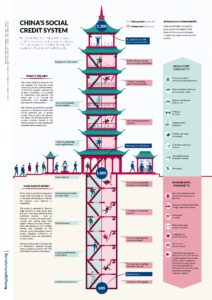SIPRI published a Topical backgrounder on 03 Sep 21, giving an overview of known international flows of major arms transfer to the Afghan armed forces between 2001 and 2020. The document discusses the supplier states, volumes, types and numbers of major arms deliveries.
Relevant extracts are as follows:-
Since 2001, significant numbers of major arms had been delivered to bolster the Afghan military and security forces, in the expectation that they would eventually be able to maintain security and suppress the Taliban insurgency without international support.
Sixteen states are known to have supplied major arms to Afghanistan.
Slightly over three-quarters of the major arms delivered, by volume, were newly produced, while the rest were second-hand, but in some cases modified prior to delivery.
Transfers from the USA
The USA was the largest major arms supplier to Afghanistan (74 per cent of country’s imports of major arms by volume).
Deliveries from the USA to Afghanistan included an estimated 21 924 armoured vehicles (e.g. HMMWV-UA, ASV-150/M-1117), 66 MD-530F armed light helicopters, 34 Cessna-208B armed light transport aircraft, and 53 UH-60A transport helicopters.
The USA also delivered 65 ScanEagle (unarmed) unmanned aerial vehicles and an estimated 250 Paveway guided bombs. Most of the arms were supplied to Afghanistan as aid.
Transfers from Russia
Russia was the second largest supplier of major arms to the Afghan armed forces in the period, accounting for 14 per cent of imports, by volume.
Deliveries from Russia mainly consisted of 90 second-hand and newly produced Mi-8MTV and Mi-17 transport helicopters.
Early deliveries were in the form of aid, but later, most of the transport helicopters were bought via and financed by the USA or United Arab Emirates.
Transfers from other suppliers
Several other states, mainly North Atlantic Treaty Organization (NATO) member states, delivered smaller volumes of major arms to Afghanistan directly or supplied major arms through US-run and US-funded programmes.
Italy accounted for 3.8 per cent of all deliveries of major arms to Afghanistan, by volume. These consisted of 16 second-hand G-222 transport aircraft in 2009–2012, financed by the USA. The aircraft were modernized in Italy before delivery.
Czechia supplied six Mi-24 combat helicopters and six Mi-17 transport helicopters. All were second-hand but were modernized in Czechia before delivery.
The United Kingdom supplied two Mi-17 transport helicopters.
Bosnia and Herzegovina, Slovakia and Turkey supplied a total of 128 second-hand artillery pieces
Norway supplied an estimated 159 TOW anti-tank missile in 2009. All these transfers came as direct aid or were financed by the USA.
Brazil was the fourth largest supplier, accounting for 2.7 per cent of all deliveries. These were 26 Super Tucano (A-29B) trainer/combat aircraft. They were bought through a US programme, financed by the USA and modified in the USA before delivery to Afghanistan. They became the main combat aircraft of the Afghan air force.
Switzerland supplied 18 PC-12 light transport aircraft in 2015. These reached Afghanistan via the USA and were probably modified in the USA for reconnaissance before final delivery.
India supplied three Cheetal light helicopters and four second-hand Mi-25 combat helicopters. It also financed the supply of four second-hand Mi-24V combat helicopters from Belarus in 2019.
Present State
The Afghan military and security forces received a substantial number of major arms in the last twenty years.
Despite this very substantial material investment, not to mention years of military training and combat support, the Taliban were able to seize most of Afghanistan from Afghan Government.
Some of the major arms listed were subsequently lost or scrapped. However, a substantial number have been captured by the Taliban.
Air Force Assets and Equipment
The Afghan Air Force was considered as Kabul government’s lethal advantage over the Taliban.
The Afghan Air Force once stood at approximately 200 fixed-wing and rotary aircraft, including A-29 Super Tucanos, AC-208 light attack aircraft, Cessna 208s, PC-12 Pilatus surveillance aircraft, C-130 Hercules transport planes, and a fleet of helicopters that included UH-60 Black Hawks and Russian-made Mi-8 and Mi-17s.
It is estimated that 25% of Afghan Air Force Fledm (to Uzbekistan), and remainder is in Disarray. Very few of the aircraft left behind are fly worthy due to lack of spare parts and maintenance support.
While the Taliban now controls a number of attack, surveillance, and transport aircraft, it still requires pilots to fly them. Taliban had been on a campaign to assassinate Afghan Air Force pilots to diminish the air strategic advantage. It is not known how many crews fled across the border or are in hiding. Aircrew shortage will further diminish their capability.
Analysis
Concern is about the effect of presence of these weapons on security and stability, both within and beyond Afghanistan’s borders.
It is unclear how many of these are or can be made operational.
The aircraft will need specialized maintenance and spare parts that are probably not easily available to the Taliban.
Other, simpler to maintain, major arms such as the light armoured vehicles can easily be operated for many years.
All in all, it seems unlikely that the major arms captured by the Taliban would pose any serious threat to stability in Afghanistan or neighbourhood.
However, the large numbers of small arms and light weapons and associated ammunition are potentially of much graver concern.
In India, concern is that these weapons may soon find a way into Pakistan, and then, through Pakistan-sponsored terrorists, to India, especially Jammu and Kashmir.
There is also a possibility that these weapons may get used for violence in Pakistan itself.
Questions
Taliban in Afghanistan has an Air Force, Will they be able to revive it and make it operational?
Will China and Pakistan help Afghanistan in its revival?
Suggestions and Value additions are most welcome
For regular updates, please register here
References
https://www.airforcemag.com/afghan-air-force-fled-remainder-in-disarray-sources-say/

